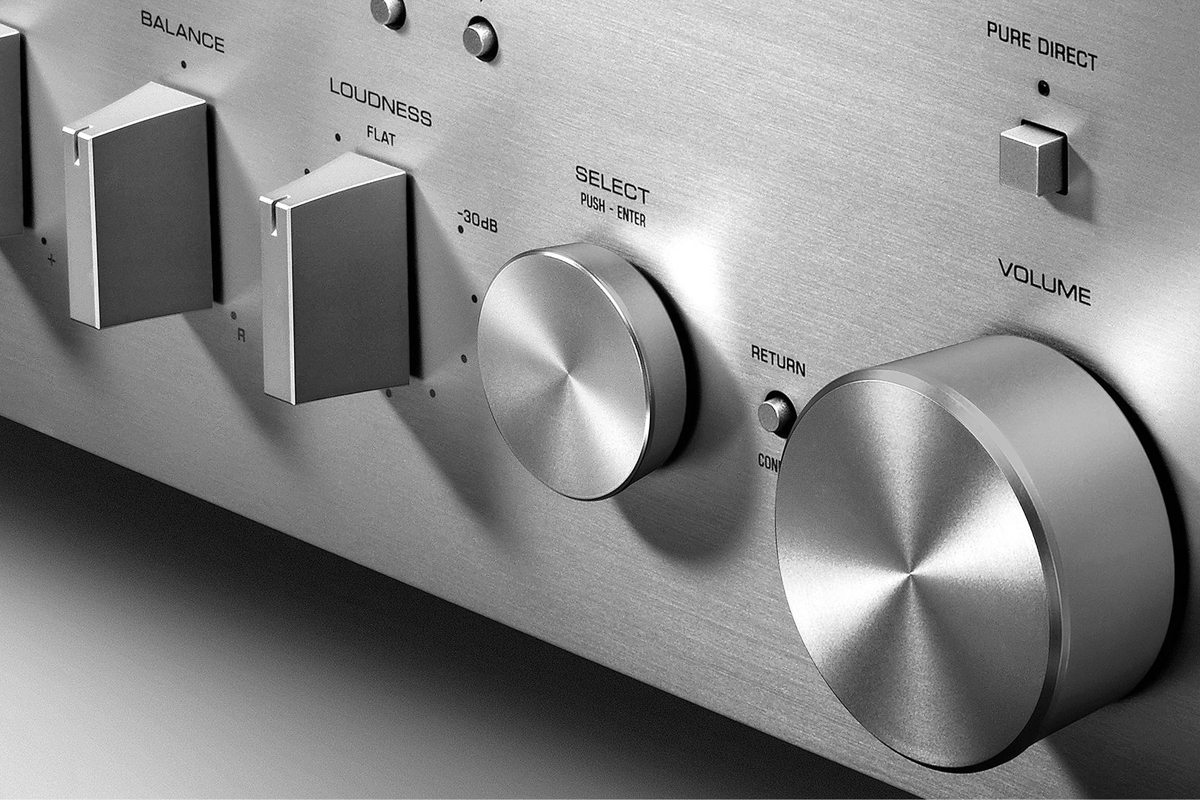
Yamaha R-N803 Network Stereo Receiver
- Written by: Al Griffin
Stereo receivers are now a thing. Yamaha’s R-N803 ($749.95 USD) is the third model I’ve tested in the last two months, the other two being Onkyo’s TX-8270 ($499) and Outlaw Audio’s RR2160 ($799). While the Outlaw review was posted in October on SoundStage! Access, the Onkyo’s wired and wireless network streaming capability made it a better fit for Simplifi, also reviewed in October. How does Yamaha’s take on the network stereo receiver compare?
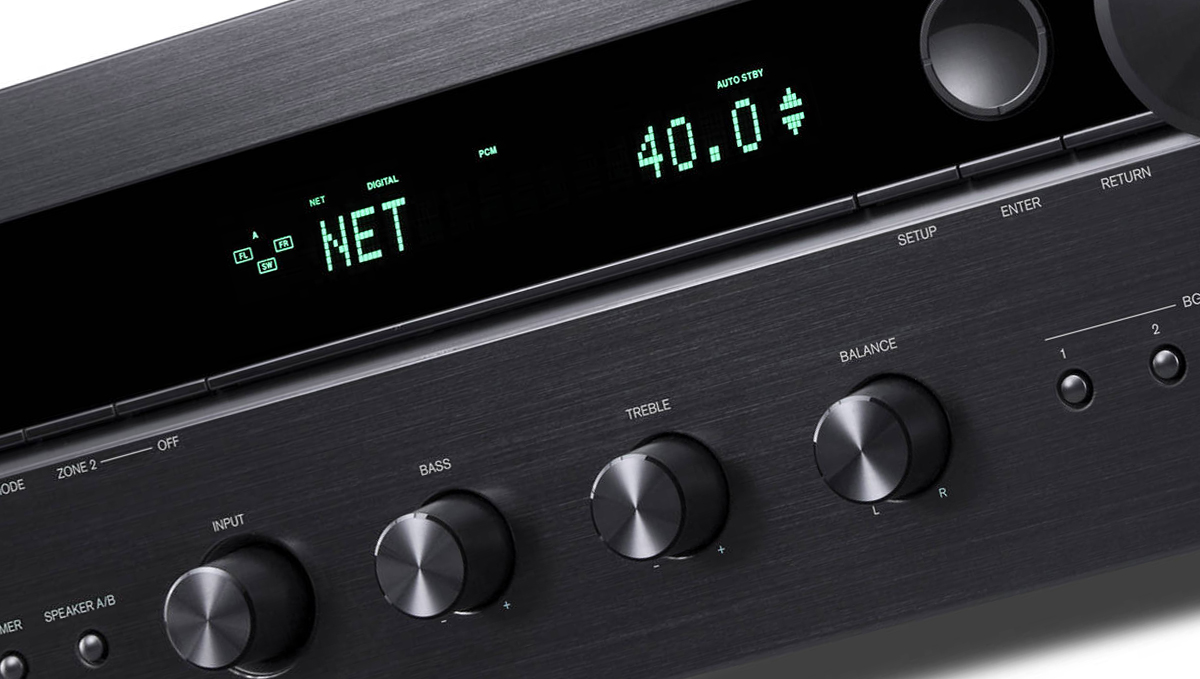
Onkyo TX-8270 Network Stereo Receiver
- Written by: Al Griffin
If there’s one thing I know about Onkyo, it’s that the company’s A/V receivers are the first to pack any new feature. Dolby or DTS have a new format or technology? Look for Onkyo to incorporate it as quickly as the silicon is minted. With stereo receivers enjoying a rebirth (look for a review of Outlaw Audio’s new RR2160 on our sister site SoundStage! Access), Onkyo’s models continue the company’s tradition of feature one-upmanship -- not that I’d have expected anything less.

CEDIA 2017, Simplifi’d
- Written by: Al Griffin
The 2017 edition of the Custom Electronic Design & Installation Association’s annual exposition, formerly called the CEDIA Expo but now simply CEDIA, took place in early September at the San Diego Convention Center. Though CEDIA is ground zero for networked audio, most of the products displayed this year were in-wall and in-ceiling speakers connected to multizone amps operated by proprietary, keypad-controlled, home-automation systems. In other words, CEDIA was packed with gear designed to be heard, not seen -- products mainly of interest to custom-installation professionals. Since the dawn of Sonos, however, a stream of consumer-oriented products have popped up amid the aisles of nondescript hardware, and virtually all of it -- mostly streamers and speakers -- uses wireless technology. Much of it is affordable, simple to install, and can run on a home’s Wi-Fi network. Here are the most interesting products I spied while roaming the aisles of the SDCC with my Simplifi goggles on. All prices are in USD.

Dynaudio Focus 20 XD Active Loudspeakers
- Written by: Al Griffin
 In the high end, powered or active speakers have been mostly designed for the desktop, where they provide a convenient solution for computer-based listening. But some companies, notably Denmark’s Dynaudio A/S, advocate the use of active models in regular listening rooms. The company’s Xeo 2 active speakers have been reviewed on SoundStage! Access. Their Focus 20 XD models have much of the technology found in the Xeo line, but with more powerful amps and sturdier, more attractive cabinets in a range of natural wood veneers. For review, Dynaudio shipped me a pair of Focus 20 XD stand-mount speakers ($5999-$6499 USD per pair, depending on finish).
In the high end, powered or active speakers have been mostly designed for the desktop, where they provide a convenient solution for computer-based listening. But some companies, notably Denmark’s Dynaudio A/S, advocate the use of active models in regular listening rooms. The company’s Xeo 2 active speakers have been reviewed on SoundStage! Access. Their Focus 20 XD models have much of the technology found in the Xeo line, but with more powerful amps and sturdier, more attractive cabinets in a range of natural wood veneers. For review, Dynaudio shipped me a pair of Focus 20 XD stand-mount speakers ($5999-$6499 USD per pair, depending on finish).
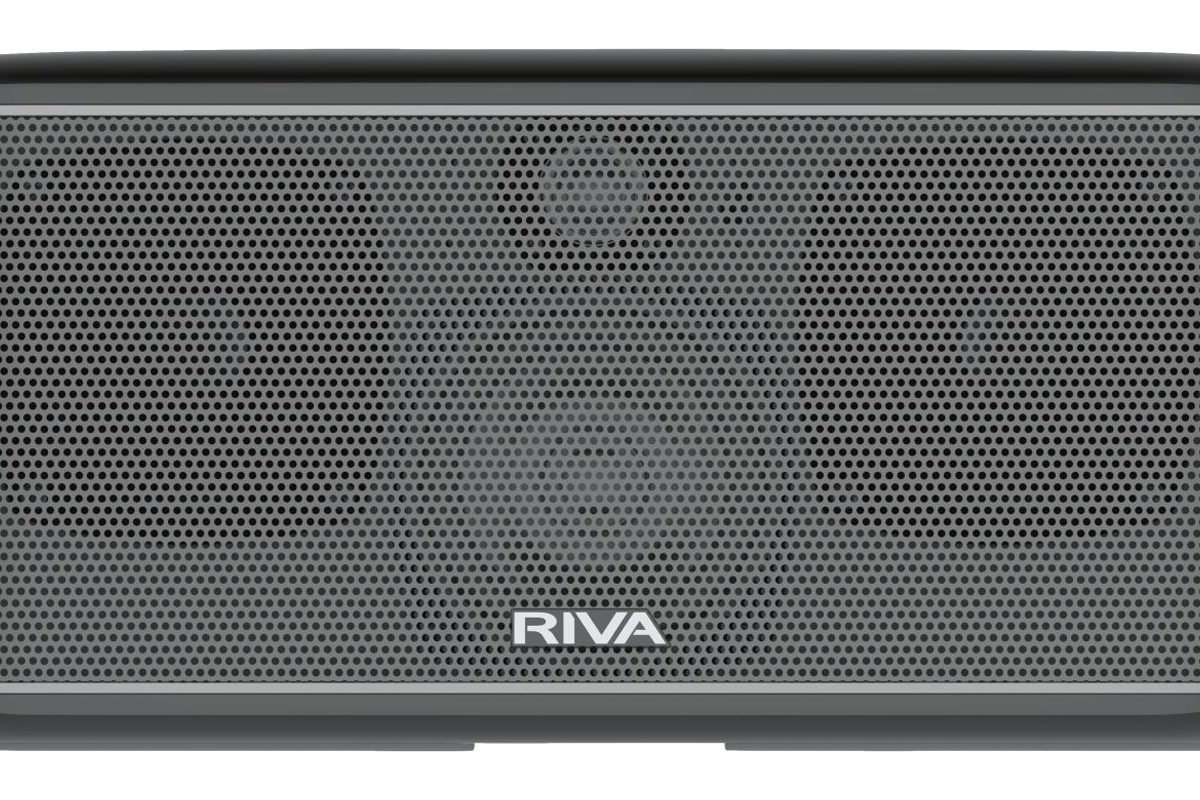
Riva Audio Festival Wi-Fi Speaker
- Written by: Al Griffin
 Most all-in-one speakers are produced by generic audio companies looking to take a slice from the Sonos pie. That generalization doesn’t apply to Riva Audio. This California-based outfit has a personality behind it -- that of Rikki Farr, a British music promoter and manager who gained fame as the ranting MC of the 1970 Isle of Wight festival, a notoriously off-the-hook event that nonetheless hosted an eclectic roster of artists ranging from Leonard Cohen and Miles Davis to Jimi Hendrix and the Who.
Most all-in-one speakers are produced by generic audio companies looking to take a slice from the Sonos pie. That generalization doesn’t apply to Riva Audio. This California-based outfit has a personality behind it -- that of Rikki Farr, a British music promoter and manager who gained fame as the ranting MC of the 1970 Isle of Wight festival, a notoriously off-the-hook event that nonetheless hosted an eclectic roster of artists ranging from Leonard Cohen and Miles Davis to Jimi Hendrix and the Who.
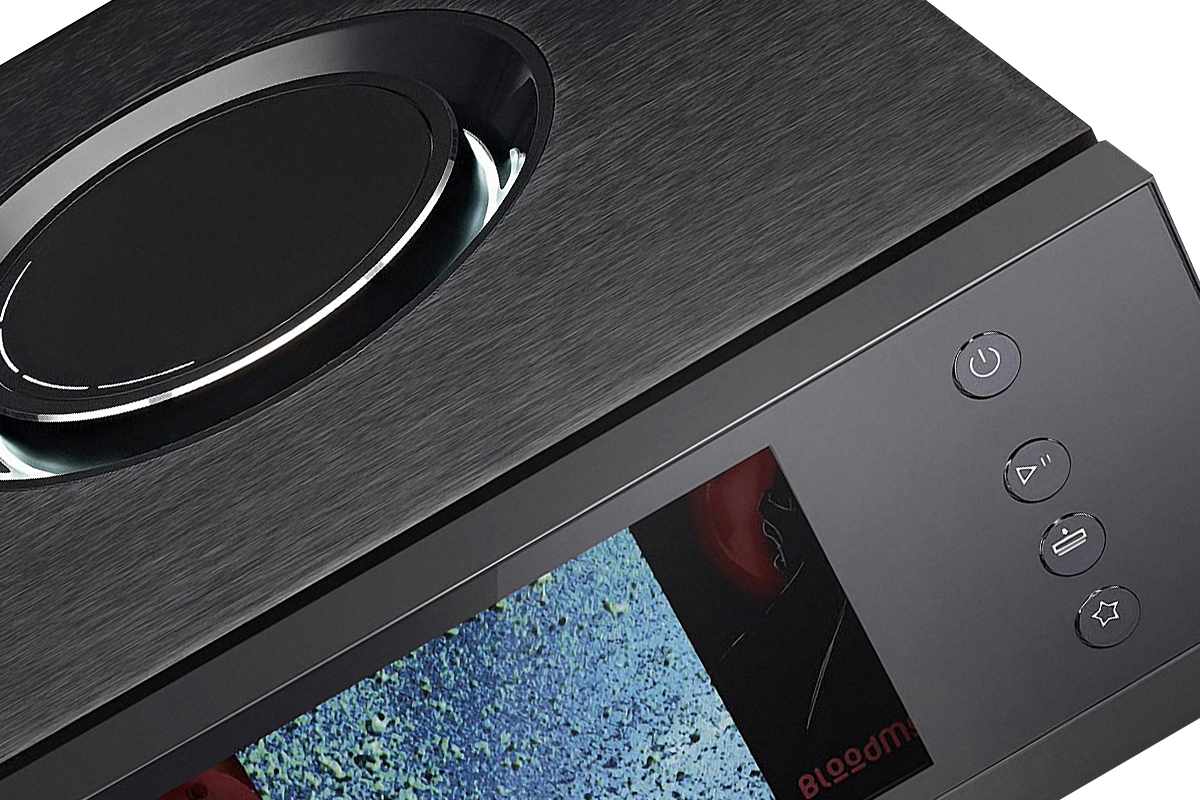
Naim Audio Uniti Atom Wireless Streaming DAC-Integrated Amplifier
- Written by: Al Griffin
 When I entered Naim’s room at last January’s Consumer Electronics Show, my attention was immediately captured by the company’s Uniti offerings. On display were three new network-capable integrated amplifiers -- the Nova, Star, and Atom -- each capable of streaming via a wide range of protocols. All three had large, front-panel LCD displays showing album art in full color, and the Star had a disc drive plus built-in storage for ripping CDs. In a CES that seemed low on excitement, the Unitis were something to get stoked about.
When I entered Naim’s room at last January’s Consumer Electronics Show, my attention was immediately captured by the company’s Uniti offerings. On display were three new network-capable integrated amplifiers -- the Nova, Star, and Atom -- each capable of streaming via a wide range of protocols. All three had large, front-panel LCD displays showing album art in full color, and the Star had a disc drive plus built-in storage for ripping CDs. In a CES that seemed low on excitement, the Unitis were something to get stoked about.
Read more: Naim Audio Uniti Atom Wireless Streaming DAC-Integrated Amplifier

Classical Prime Time
- Written by: Al Griffin
Once a business with an all-you-can-eat model, media streaming has begun to carve out niches to serve more narrowly defined interests. Take Disney, which recently announced that it would pull its content from Netflix to create its own streaming platform aimed at parents of young children who eagerly consume Disney and Pixar movies. Then there’s FilmStruck, a service created by Turner Classic Movies and the Criterion Collection to stream their catalogs directly to equally eager cineastes.

NAD Masters Series M50.2 Digital Music Player
- Written by: Al Griffin
For many people, computers have become an indispensable tool for listening to music. Computers rip CDs, and play tracks using software such as Audirvana Plus, iTunes, and JRiver Media Center. They download high-resolution files from sites such as HDtracks, and stream music from services that include Spotify and Tidal. Linked via USB to a DAC, preamplifier, or integrated amp, a computer can function as a source component. Alternatively, in a networked setup, it can be tapped to direct the flow of data via Ethernet.
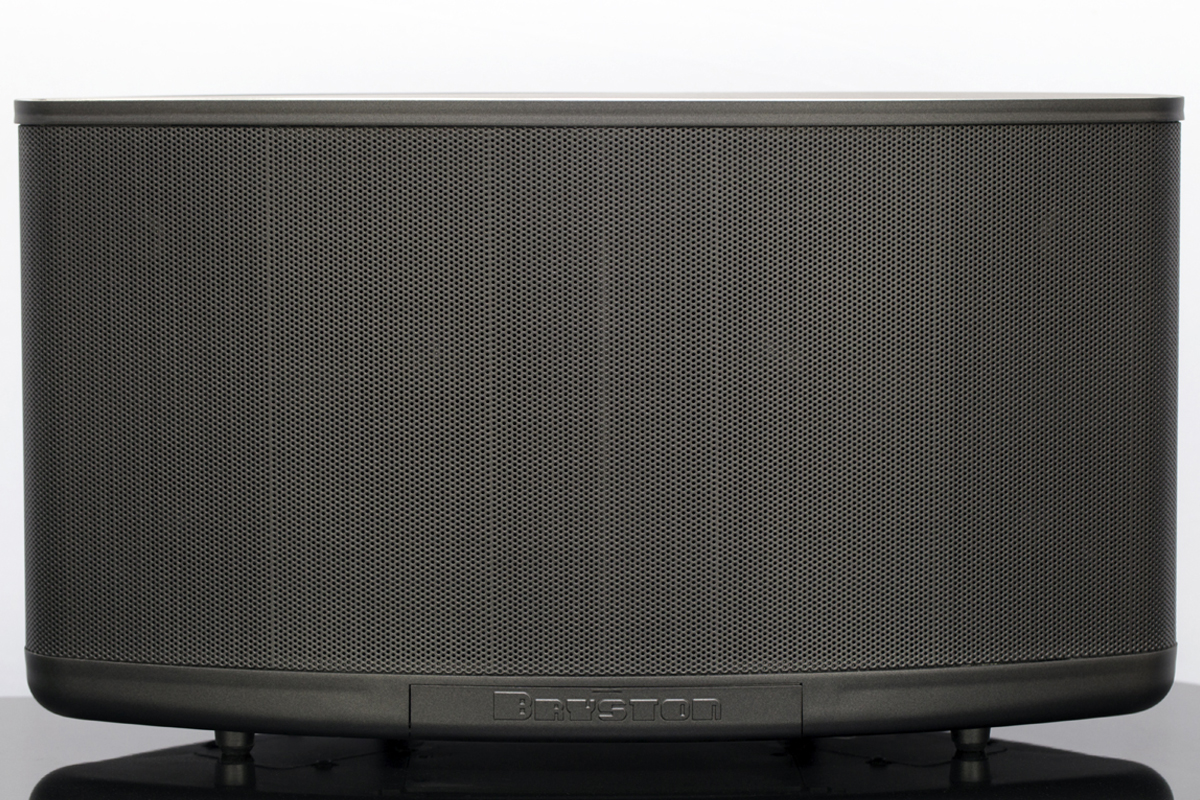
Bryston BryFi BW-1 Wi-Fi Speaker
- Written by: Al Griffin
An understatement: all-in-one speakers come with built-in limitations. Destined to be placed on a shelf or kitchen counter, they’re usually quite small, with little drivers designed to fit the space available within. The downside of all-in-ones, of course, is their limited output of sound, along with soundstaging that barely extends past the edges of their small enclosures. Convenient? Yes. Replacement for a system of separate components? Hmm . . .

The Röst Reconsidered
- Written by: Al Griffin
Hegel Music Systems’ Röst ($3000 USD) was the first integrated amplifier to be reviewed on SoundStage! Simplifi, and to this day it’s a benchmark that other integrated amps must measure up to. That situation might seem odd when you consider that some models we’ve reviewed in the past few months have clearly outpaced the Röst in such features as Roon readiness, DSD support, and MQA decoding, all of which the Hegel lacks. The Röst also has no control app -- another amenity that manufacturers typically make available for network-capable products. What is it about the Röst that makes it special?
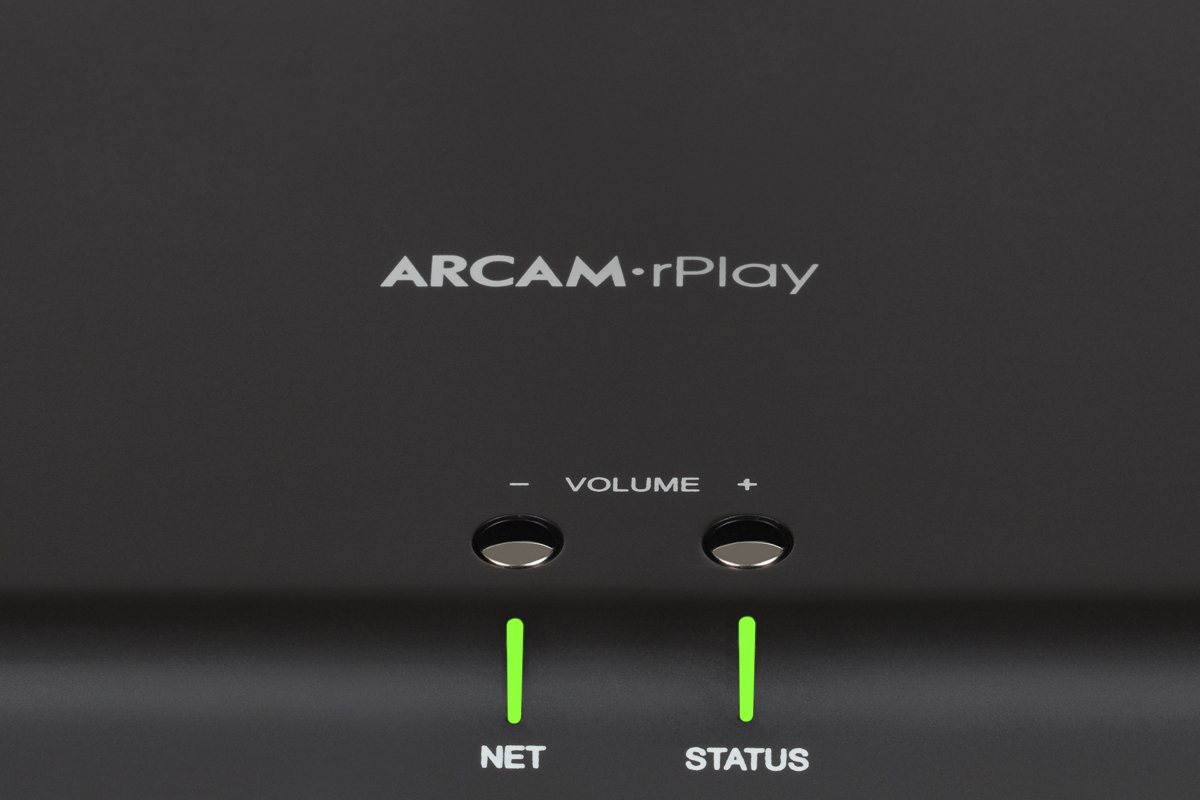
Arcam rPlay Music Streamer
- Written by: Al Griffin
In the past year I’ve reviewed an array of all-in-one products, ranging from wireless powered speakers to integrated models combining streamer, DAC, preamp, and amp functions in a single case. A related category that I’ve ignored completely is the network audio player, a group that includes Arcam’s new rPlay ($599 USD).

Auralic Polaris Wireless Streaming DAC-Integrated Amplifier
- Written by: Al Griffin
 Finding a perfect integrated amplifier isn’t easy. While most now provide a USB input for hooking up a computer, many lack a wired Ethernet or Wi-Fi connection for streaming. Some integrated amps are compatible with AirPlay, and others are Roon Ready. Many provide a phono input for a turntable, but definitely not all.
Finding a perfect integrated amplifier isn’t easy. While most now provide a USB input for hooking up a computer, many lack a wired Ethernet or Wi-Fi connection for streaming. Some integrated amps are compatible with AirPlay, and others are Roon Ready. Many provide a phono input for a turntable, but definitely not all.
Read more: Auralic Polaris Wireless Streaming DAC-Integrated Amplifier

High End 2017, Simplifi'd
- Written by: Al Griffin
Ah, Munich in the spring. Strolling the banks of the Isar. Pedaling a boat across the Kleinhesseloher See (a lake) in the English Garden. Then, to wind down the day, hoisting a stein in the biergarten of the Augustinerkeller.
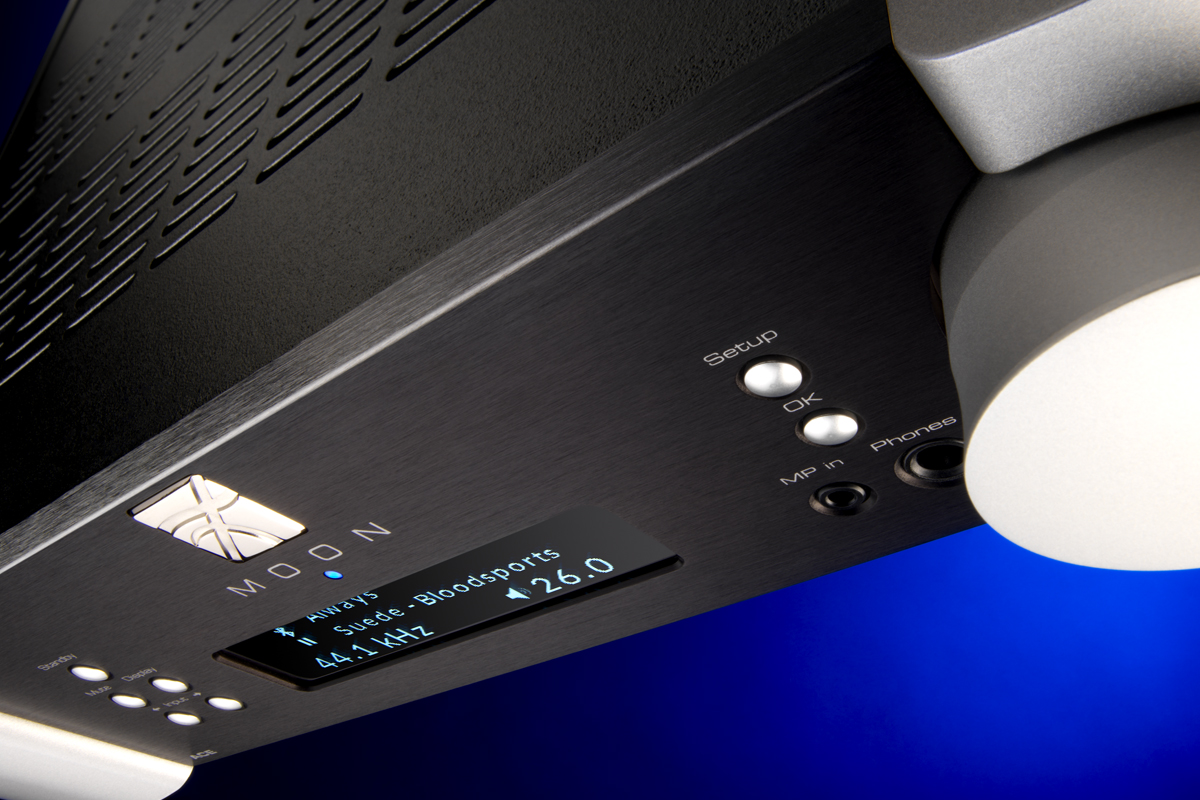
Simaudio Moon Neo ACE DAC-Streamer-Integrated Amplifier
- Written by: Al Griffin
It’s often said -- usually about fashion -- that what’s old becomes new again: every decade or so, flannel shirts and skinny jeans come back in style. That’s the way Simaudio sees its ACE, the latest model in the Canadian company’s value-oriented Moon Neo line ($3500 USD). ACE is an acronym for A Complete Experience, and Simaudio is pitching it as a contemporary extension of the stereo receivers that drove the hi-fi boom of the 1970s. And a complete system it is, housing a moving-magnet phono stage, DAC, network player/streamer, preamplifier, power amplifier, and headphone amp in a single, compact box. Just connect it to speakers, link it to your wired or wireless network, and plug in any legacy components you have lying around. The ACE is like having a whole hi-fi system up your sleeve.
Read more: Simaudio Moon Neo ACE DAC-Streamer-Integrated Amplifier

Vinyl: There's an App for That
- Written by: Al Griffin
Each of the seven vices can be committed by the record collector -- even sloth, which is the sin of not taking proper care of your LPs, or of failing to file them correctly. But the vice I’ve come to most closely associate with collecting vinyl is greed.

Metadata: Life with Roon
- Written by: Al Griffin
Are you aware of Roon? Launched in 2015, the music library, discovery, and playback software has since been written up in several feature articles and reviews appearing on SoundStage! sites. The consensus here is that we like Roon, and recommend it despite the relatively steep cost of entry: $119 USD per year, or $499 lifetime.
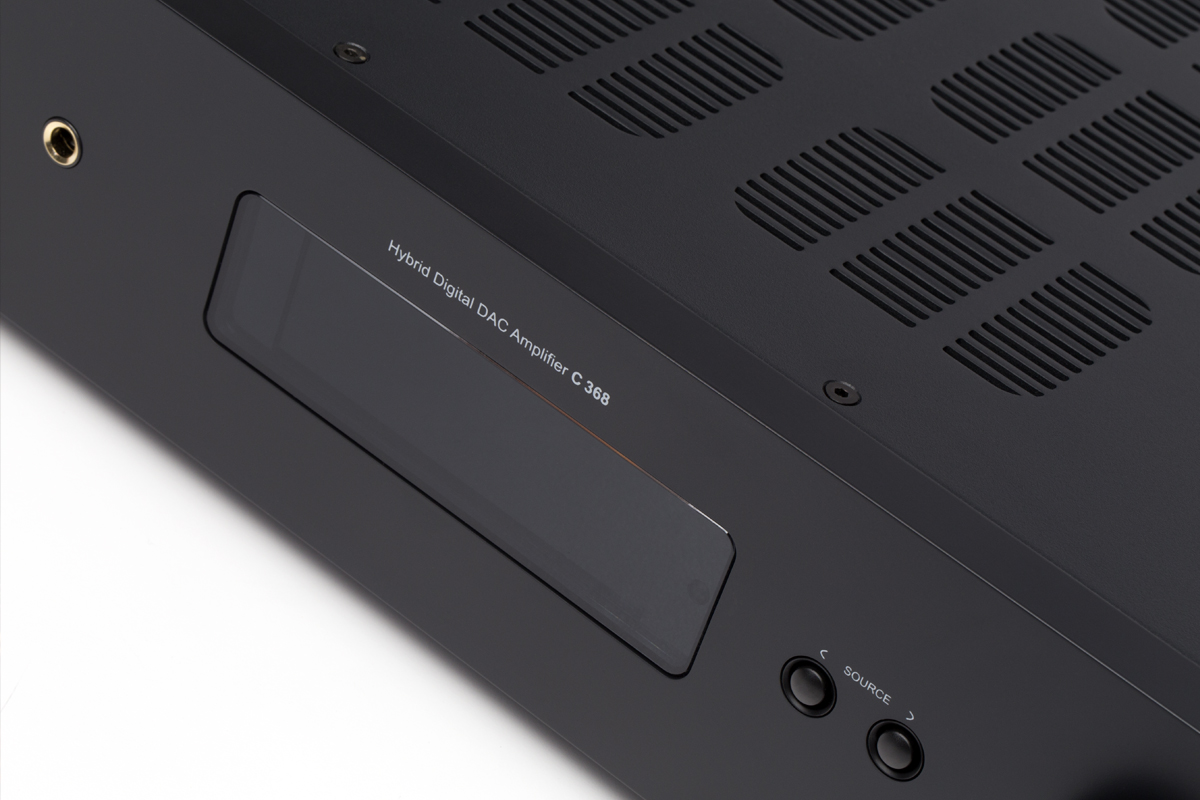
NAD C 368 DAC-Integrated Amplifier
- Written by: Al Griffin
 Integrated amplifiers are the multitaskers of hi-fi, earning their keep by meeting multiple requirements at once. Since they usually need to be priced affordably, integrateds tend to be conservatively designed. That said, many recent models accommodate contemporary listening habits through features like Bluetooth streaming and a USB DAC input. Others, like Hegel Music Systems’ Röst, which I recently reviewed on SoundStage! Simplifi, go further by incorporating a wired LAN connection, IP control, and AirPlay streaming.
Integrated amplifiers are the multitaskers of hi-fi, earning their keep by meeting multiple requirements at once. Since they usually need to be priced affordably, integrateds tend to be conservatively designed. That said, many recent models accommodate contemporary listening habits through features like Bluetooth streaming and a USB DAC input. Others, like Hegel Music Systems’ Röst, which I recently reviewed on SoundStage! Simplifi, go further by incorporating a wired LAN connection, IP control, and AirPlay streaming.

The Internet and Audio: The Good, the Bad, and the Impossible
- Written by: Al Griffin
Lossy compression, piracy, and poorly compensated artists aside, it would be hard to make the case that, overall, the Internet has been bad for audio. Hearing new recorded music used to involve traveling to a store and buying a physical disc. Now, you can instantly access almost any music you want via streaming. In the case of Tidal HiFi -- and soon, possibly, other services -- you can also stream it in a compressed high-resolution format. Having such a vast library at your disposal has the side benefit of encouraging exploration: In the past three years, I’ve discovered more interesting new music by browsing streaming services than I had in the preceding 15 years, when my only choices were physical discs or downloads. (Legal downloads, that is; I never did the Napster thing, and I’m sure you didn’t either.)
Read more: The Internet and Audio: The Good, the Bad, and the Impossible
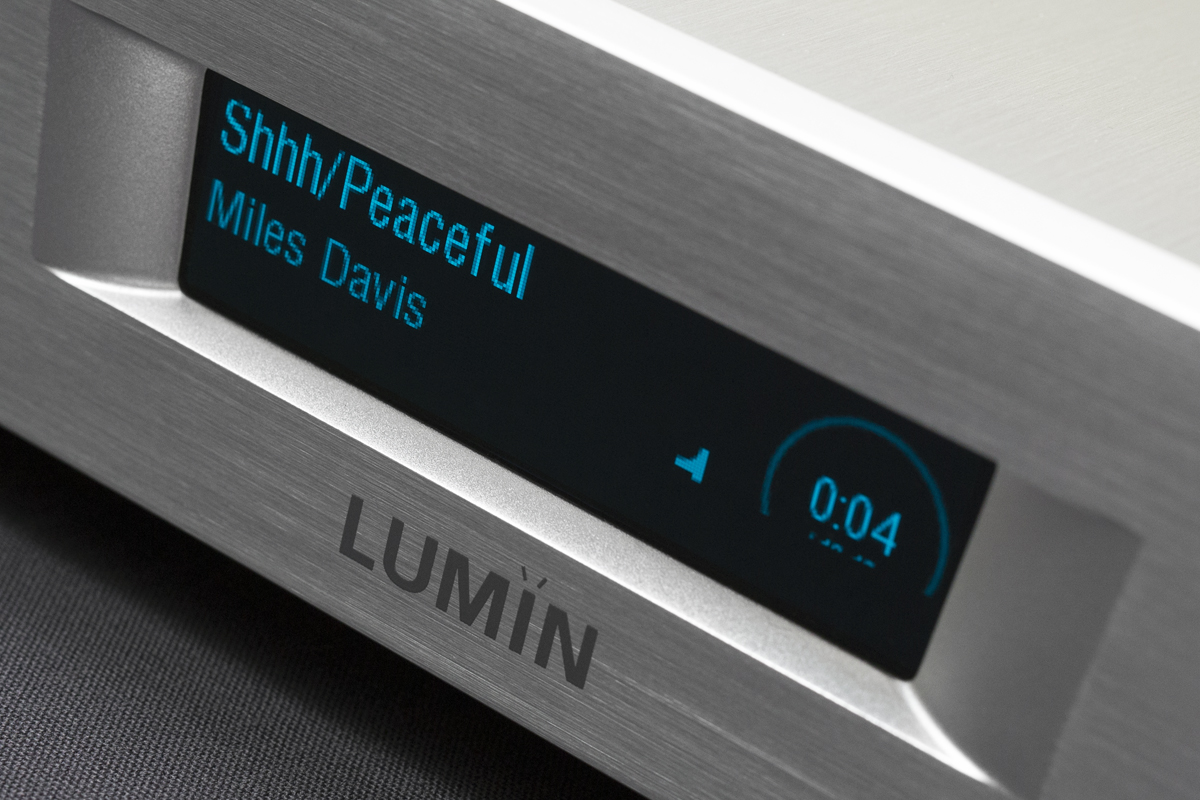
Lumin M1 Integrated Amplifier-Network Music Player
- Written by: Al Griffin
Lumin, a brand owned by Pixel Magic Systems Ltd., in Hong Kong, is known for its line of network music players and transports. The M1, their latest product, is a slightly different beast: an elegant, all-in-one component that combines the functionality of a UPnP streamer with a class-D amplifier in a slim housing and selling for $1995 USD. To get up and running, you just connect the M1 to USB storage, or to your home network via Ethernet, download Lumin’s iOS/Android control app, and off you go. It couldn’t be simpler.
Read more: Lumin M1 Integrated Amplifier-Network Music Player
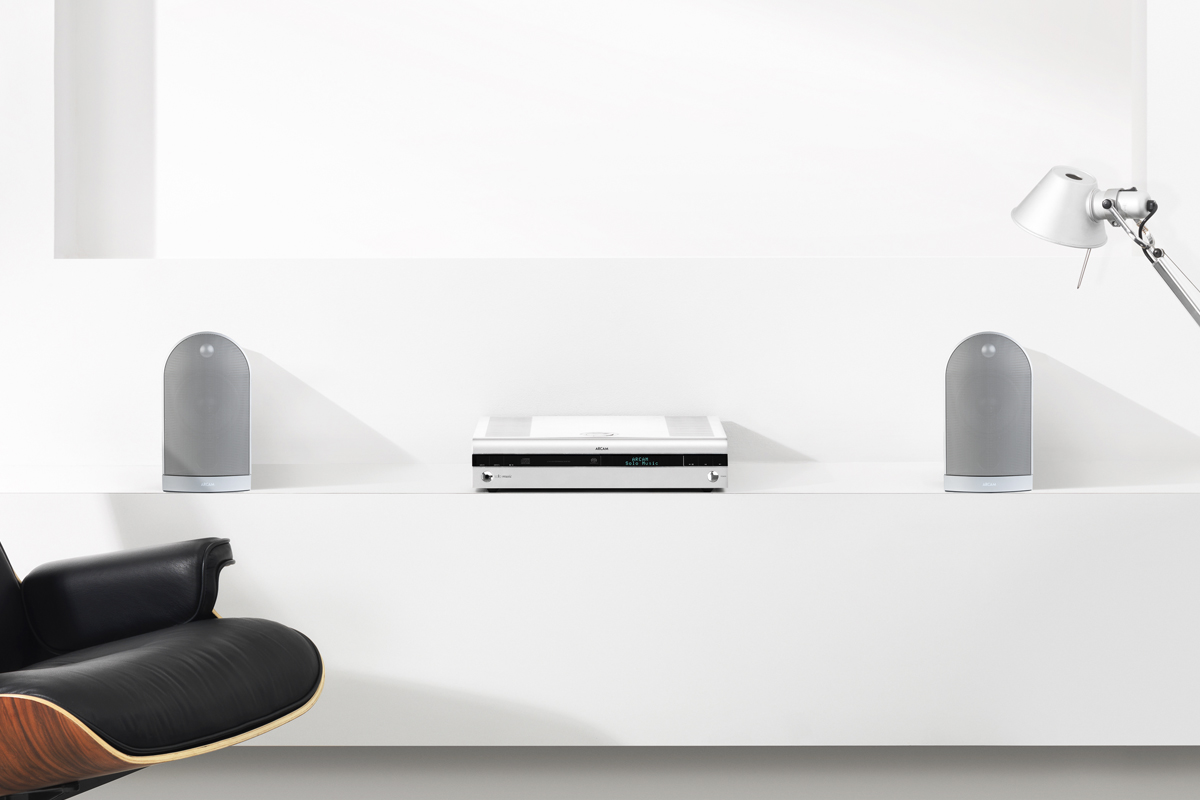
Arcam Solo Music DAC-Integrated Amplifier-Universal Player
- Written by: Al Griffin
Arcam is no stranger to the idea of integrated playback systems, having launched the first Solo Music in 2005. In this second generation of the model ($2000 USD), they update the concept for the streaming era by adding wired and Wi-Fi network connectivity, along with aptX Bluetooth. Like the original, the new Solo Music features a built-in disc player, and DAB/DAB+ and FM tuners. (Terrestrial radio broadcasting -- it’s still a thing!) And if you’re wondering if this is a system aimed at both audiophiles and audio newbies, playback support encompasses CD and SACDs, audiophiles being the only people on earth to own SACDs.
Read more: Arcam Solo Music DAC-Integrated Amplifier-Universal Player
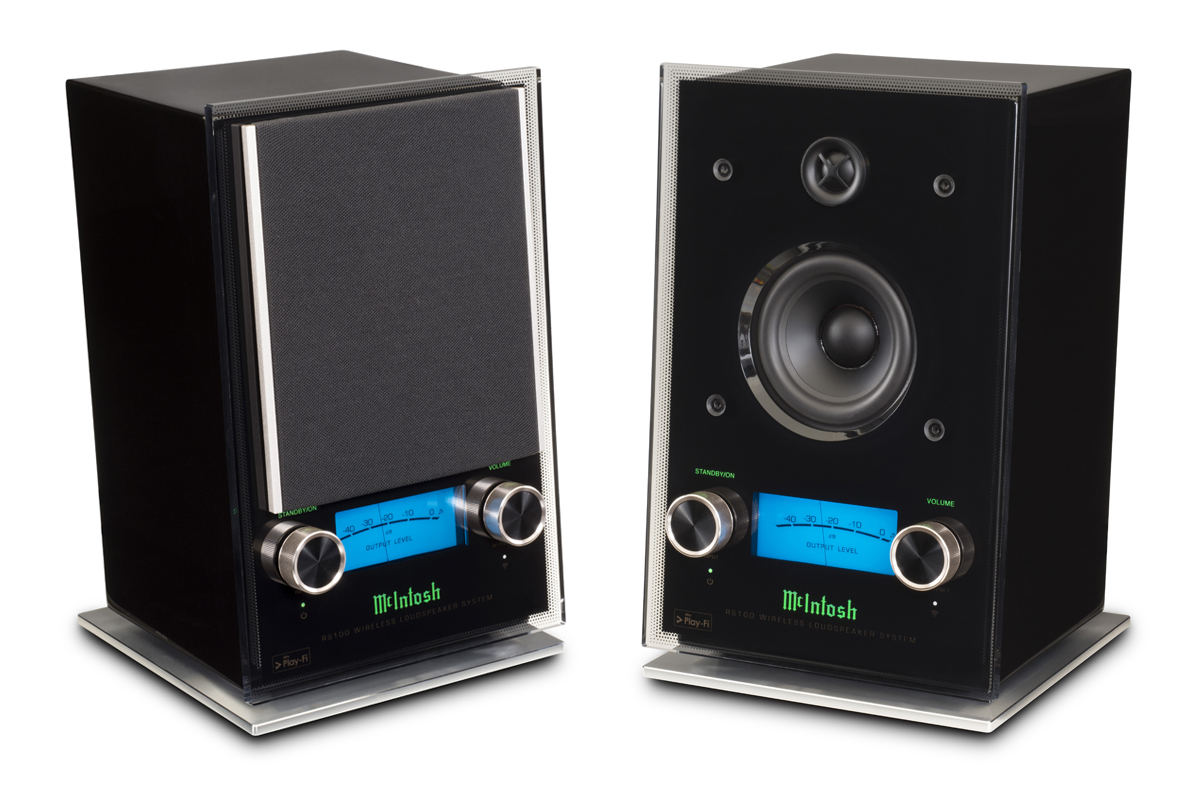
McIntosh Laboratory RS100 Wi-Fi Loudspeakers
- Written by: Al Griffin
Among American audio brands, it would be difficult to beat McIntosh Laboratory for sheer name -- and image -- recognition: The blue-and-green glowing McIntosh faceplate, with its meters and chunky knobs, is perhaps the most familiar icon of American hi-fi. Though mostly associated with tubed power amplifiers and preamplifiers, in recent years McIntosh has branched out, introducing everything from headphones and media streamers to wireless loudspeakers. Though it continues to manufacture the older product categories it’s best known for, the McIntosh of today is not your dad’s McIntosh.

The State of Streaming
- Written by: Al Griffin
One news item to come out of the 2017 Consumer Electronics Show that got little play in the otherwise exhaustive show coverage on SoundStage! Global was the announcement that Tidal would begin streaming Hi-Res Audio (HRA), effectively immediately. The announcement was made at a Hi-Res Audio Pavilion arranged by the Digital Entertainment Group (DEG) and located not at the Venetian, but at the Las Vegas Convention Center, amid booths filled with camera accessories, VR headsets, and drones. Statements made by other companies at the event indicated that we can soon expect HRA streaming from additional services, including Pandora, Napster (formerly Rhapsody), and HRA download site HDtracks.
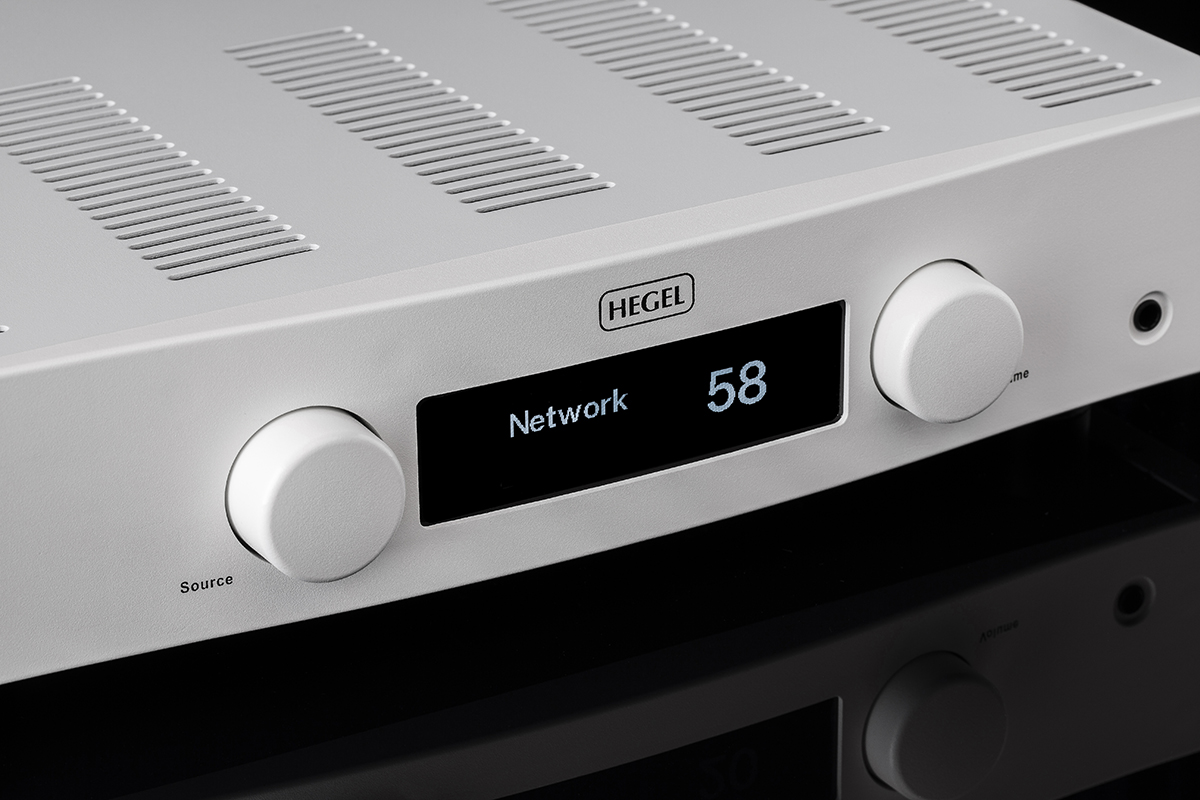
Hegel Music Systems Röst Integrated Amplifier
- Written by: Al Griffin
 As a listener, I’m new to Hegel the audio equipment maker. As a reader, I’m familiar with Hegel the German philosopher, mostly due to his influence on the thinking of Karl Marx. Georg Wilhelm Friedrich Hegel (1770-1831) is associated with the Hegelian Dialectic, in which things and ideas evolve in a continual process of change that finds synthesis in an ideal reality. Marx, among other things, is known for turning Hegel on his head by shifting the Hegelian Dialectic from the ideal world back to the material one.
As a listener, I’m new to Hegel the audio equipment maker. As a reader, I’m familiar with Hegel the German philosopher, mostly due to his influence on the thinking of Karl Marx. Georg Wilhelm Friedrich Hegel (1770-1831) is associated with the Hegelian Dialectic, in which things and ideas evolve in a continual process of change that finds synthesis in an ideal reality. Marx, among other things, is known for turning Hegel on his head by shifting the Hegelian Dialectic from the ideal world back to the material one.

CES 2017, Simplifi'd
- Written by: Al Griffin
The 2017 Consumer Electronics Show was arguably a bust for perfectionist audio, but there were still loads of interesting products to be found if you looked past the typical model of separates plus passive speakers. In retrospect, integrated products with wireless/streaming capability were the norm rather than the exception, indicating that such functionality has become a standard feature in the product lines of many companies. It was also the first audio show at which I saw high-end manufacturers tap Amazon’s voice-controlled Echo Dot to help conduct demos (“Alexa, play us some Norah Jones . . .”). Technology marches on.

Naim Audio Mu-so Qb Wi-Fi Speaker
- Written by: Al Griffin
 When Naim Audio released its first wireless music system, the Mu-so ($1500 USD), in late 2014, the slab-like speaker grabbed attention with its sleek, decor-friendly looks. But the Mu-so was more than just a pretty face: packing dual three-way speakers, each driver separately powered by a 75W amp, the Mu-so was designed not only to deliver background tunes, but for serious listening. A year later, at the Consumer Electronics Show in January 2016, Naim was already demoing a new variation on the theme: the Mu-so Qb.
When Naim Audio released its first wireless music system, the Mu-so ($1500 USD), in late 2014, the slab-like speaker grabbed attention with its sleek, decor-friendly looks. But the Mu-so was more than just a pretty face: packing dual three-way speakers, each driver separately powered by a 75W amp, the Mu-so was designed not only to deliver background tunes, but for serious listening. A year later, at the Consumer Electronics Show in January 2016, Naim was already demoing a new variation on the theme: the Mu-so Qb.

Why "Simplifi"
- Written by: Al Griffin
If you’re reading this, a thought may have entered your head: Does SoundStage! need another website dedicated to reviews of audio components? Good question. I’ll try to answer it here.
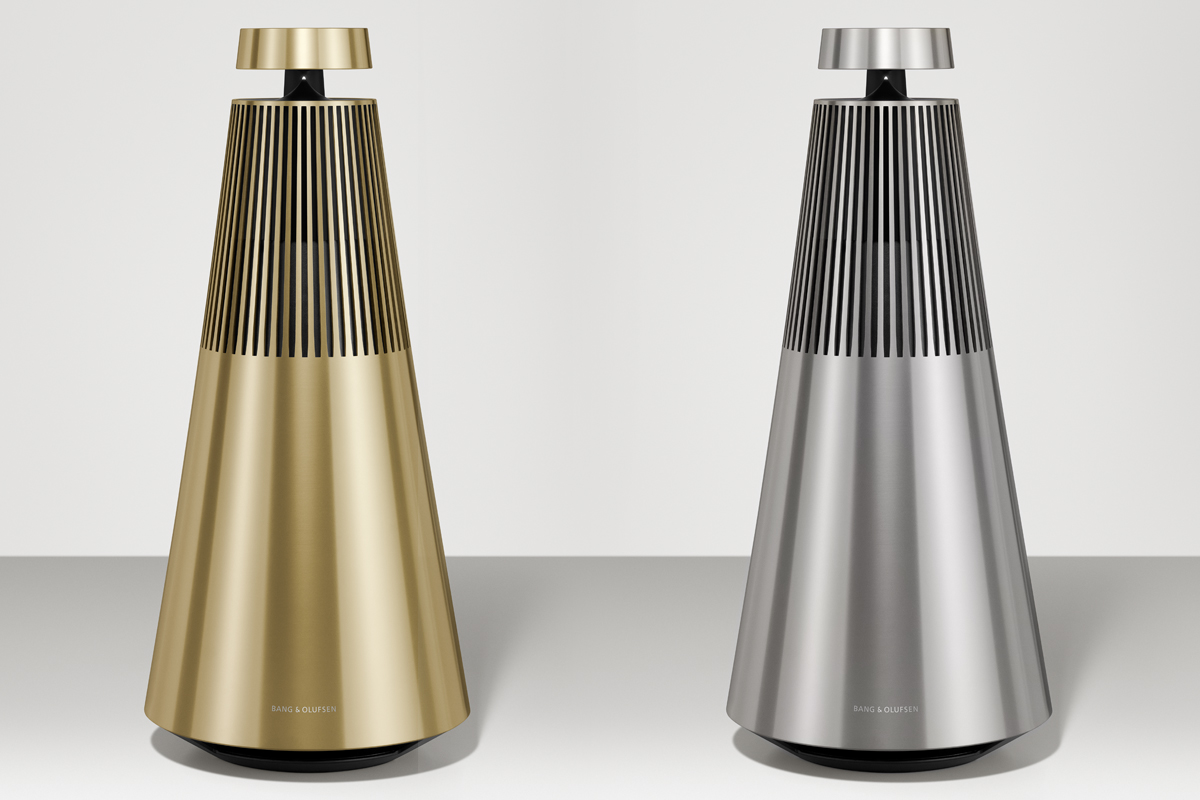
Bang & Olufsen BeoSound 2 Wi-Fi Speaker
- Written by: Al Griffin
We live in the era of the wireless speaker. I say that not only because of the proliferation of Sonos and its clones. Nor am I talking about Bluetooth speakers, which have become the default music-playback option for most folks. What makes me think that the wireless category has finally, truly arrived are new options from companies such as Dynaudio and Devialet -- wireless, powered speakers that provide high-performance alternatives to traditional wired hi-fi systems.
Page 9 of 9
SoundStage! Simplifi is part of
All contents available on this website are copyrighted by SoundStage!® and Schneider Publishing Inc., unless otherwise noted. All rights reserved.
This site was designed by RocketTheme, Karen Fanas, and The SoundStage! Network.
To contact us, please e-mail info@soundstagenetwork.com





